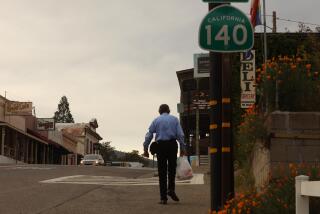As India’s old ways change, senior-care homes are on the rise
TRIVANDRUM, India — R. Padmanathan Nair sits on a plastic chair in the entryway of the Heritage senior home talking about the fellow residents who treat him like family, which is helpful seeing as his own rarely visits.
His wife tried to abscond with their valuables, he said, so he gave the house to a niece, who ignored him after she got the property. Now his daughter is the only one who visits the 76-year-old retired teacher here in the capital of the southern state of Kerala, and that’s just a few times a year.
“But she only comes to get money from me,” said Nair, unshaven and dressed in a white lungi skirt-like garment and striped polo shirt, his voice rising in anger. “It’s a blessing there are homes like this.”
India, a nation that prides itself on the inclusive embrace of its extended families, is slowly accepting a feature long common in the West: elder-care facilities.
Social changes find more urban families rejecting traditional arrangements involving grandparents, parents and children under one roof, preferring life without nosy in-laws. Economics is also playing a role as more professionals work abroad or in large Indian cities, too busy to care for aging parents.
But things work both ways, sociologists say. More older people also prefer living with others their age, even enjoying a bit of romance away from the disapproving gaze of grown-up children.
“Life here is easier than living with my family in all respects,” said P.V. Bhaskasan, also a retired teacher. “There’s too much fighting in extended families.”
As India’s traditional social contract frays, however, seniors are also more subject to neglect, physical and mental abuse and depression. In 2010, 11,100 people older than 60 committed suicide, a 20% increase from 2008.
“In abuse cases, parents don’t want to come out against their own children,” said Anjali Raje, deputy executive director of the International Longevity Center in Pune. “So it’s swept under the rug.”
The idea of senior homes has long carried a stigma in India.
“I can’t imagine sending my parents to one of these,” said Sathish Kumar, 47, a Trivandrum rickshaw driver who shares care of his 77-year-old father with his brother. “It’s rather tragic.”
But that’s changing, as more upscale gated communities for seniors, such as Mumbai’s pioneering Dignity Lifestyle, offer saunas, aromatherapy, gyms and pools.
Because it’s a relatively new concept, there’s a generational difference, with those in their 70s and 80s generally more unhappy about living in a senior home and those in their 60s — a group that’s had more time to watch society change around them — more accepting, said Dr. C.P. Muralidhara, care home manager at Utsav Retirement Resort outside New Delhi.
India, with its relatively young population, is still a long way from Western nations. Most extended families still live together, and even when grown children move away they tend to stay relatively close and visit often.
But the picture is changing, with the number of India’s people older than 60, now at 96 million, expected to double by 2030. Critics say government planners are so enamored of the “India shining” narrative of its young people that they all but ignore the demographic shift.
“This is the government’s last priority,” said Roshan Jacob, an elder-care expert. “We’re digging our own grave. It’s a 200% crisis for India if we don’t start thinking about this.”
A recent survey by Economist magazine rated India last among 40 nations, behind Uganda, on “end-of-life care services,” including access to drugs and caregivers. Only a few medical colleges in this nation of 1.2 billion people teach geriatrics. And less than 15% of the population is covered by a pension system, which offers as little as $1.50 a month.
Kerala is at the leading edge of the trend, reportedly home at one point to half of India’s senior-care facilities. The state is among India’s most rapidly aging, its average life expectancy, at 72, nearly six years above the national average. And it has one of the highest percentages of its labor force working overseas.
Although there are growing options for middle-class retirees, those at the bottom in India often fall through the cracks. Institutions such as the 20-bed Bethany Home for the Aged, on the outskirts of Trivandrum, struggle to cope, taking in those destitute, abandoned, afflicted withAlzheimer’s disease.
One resident thinks he’s being poisoned every time they give him his blood-pressure medicine, said the home’s director, P. Edison, a minister with the Church of South India. Others don’t remember they’ve eaten and accuse the facility of starving them.
“Most of those living here don’t want to be here but have nowhere else to go,” he said. “It takes enormous patience.”
At the other end of the spectrum is a growing number of upscale options, including the Utsav resort near New Delhi, where apartments for residents 55 and older in a gated enclave with manicured lawns and fancy topiary sell for $40,000 or more, plus monthly maintenance charges.
Residents Sushila Jagtiani, 75, and her husband, Lal, 78, both retired doctors, considered living at a senior home in Australia near their son but opted for Utsav in part because it was much less expensive. “And residents in the Australia home were all lonely,” she said. “In India, it’s not like that. At this stage we can’t adapt.”
Nair, the retired teacher, who’s lived at Heritage Home for 12 years, bemoans the loss of traditional Indian values in society.
“Young people today have become more like in America,” he said. “They’re greedy and have no respect for the older generation.”
With the afternoon heat at its peak, he heads up some stairs to his 15-by-15-foot studio apartment, with a single bed, a cupboard and a small altar with images of several Hindu gods.
Although he’s pleased that his fellow residents help one another, he says moving into a community with 56 unrelated people has its challenges. Occupants argue, yell, even have brawls.
“The way some residents act is quite deplorable,” he said. “They may be old, but they’re not always very mature.”
Tanvi Sharma of The Times’ New Delhi bureau contributed to this report.
More to Read
Sign up for Essential California
The most important California stories and recommendations in your inbox every morning.
You may occasionally receive promotional content from the Los Angeles Times.










